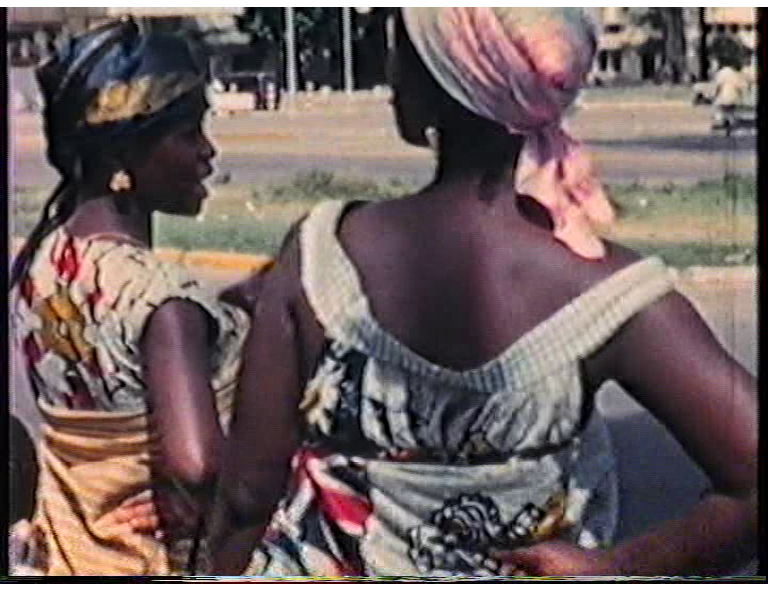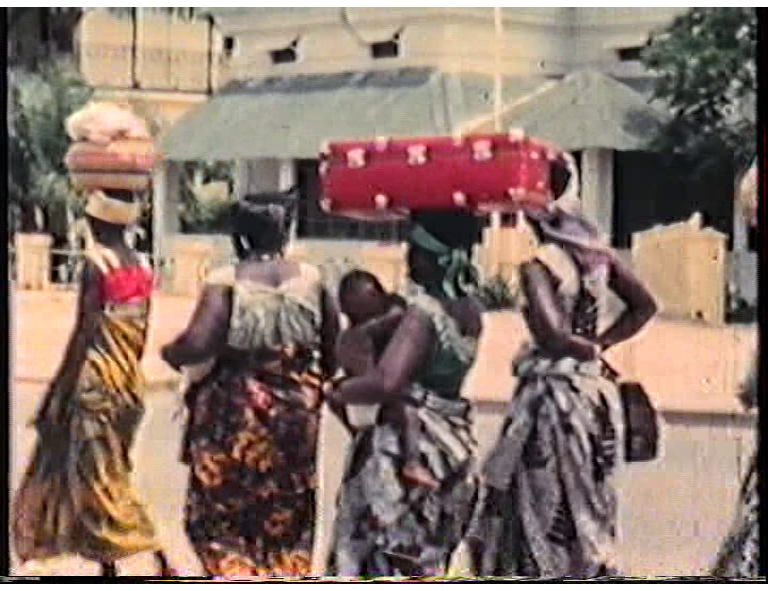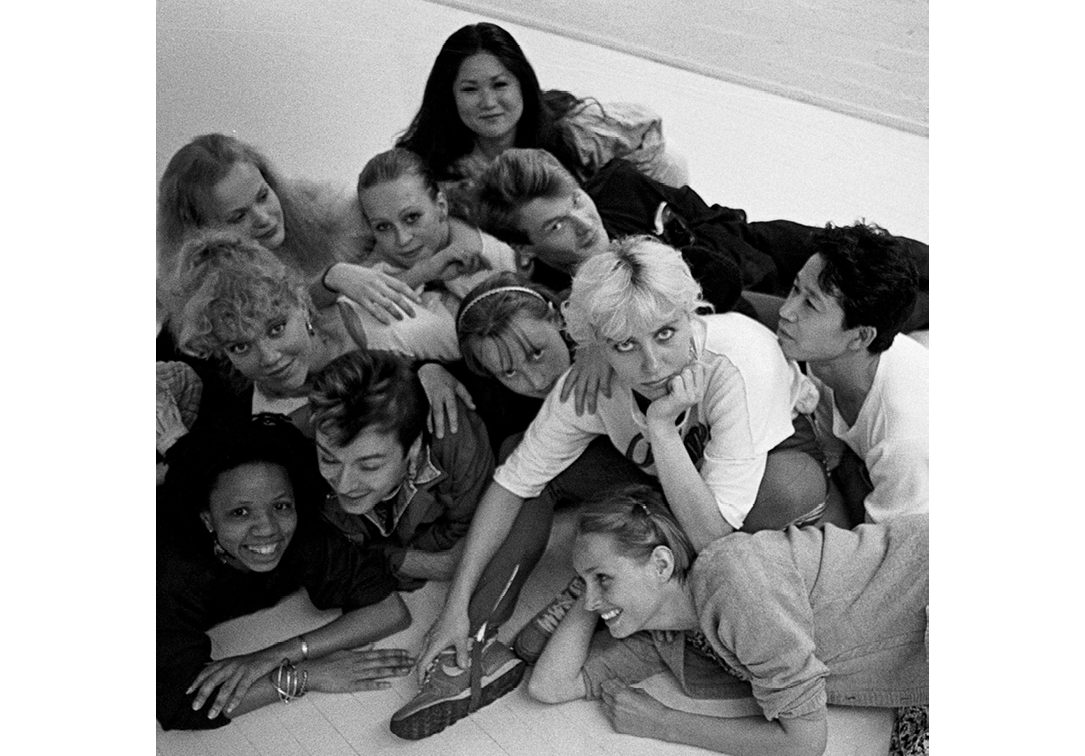32. Reflections on Migrations and Border Crossings, Destinations and Destinies1
© 2022 Sirpa Salenius, CC BY-NC 4.0 https://doi.org/10.11647/OBP.0296.32
Indépendance Cha-cha, to zuwi ye!
Oh Kimpwanza cha-cha, tubakidi
Oh Table Ronde cha-cha, ba gagnér oh!
Oh Lipanda cha-cha tozuwi ye!
(Indépendance Cha-cha declared
Oh Freedom cha-cha we’ve conquered
At the Round Table they won
Oh Liberty cha-cha we’ve conquered!)
Grand Kallé, ‘Indépendance Cha cha’(translation by Franklin Katunda)
Migration narratives composed of fragmented memories and frozen moments evoked through music and captured in photographs define home and belonging, destinations and destinies in non-linear, disrupted time cycles. Migration across nations entails incessant reconciliation, as dashing motion dissolves into rootless movement that is constant and continuous. Such movement is closely linked to re-location, displacement, and circulation. The identities of migrants tend to be in flux, embracing and absorbing difference, constantly changing, more so than of those more firmly rooted merely in one place. Therefore, there seems to be an urgency in capturing the essence of otherwise rapidly dissipating moments lived in particular societies and cultures, so that there is something to take with us, to render our memories tangible. The memories are fixed in situations, re-evoked through images and objects, to bring stability to a reality shifting like quicksand. From the fragments of distorted memories, we create our narratives of who we are and where we belong.
According to Susan L. Roberson, “Travel, movement, mobility […] are some of the essential activities of human life.”2 They pertain not only to crossing geographical borders but are also intellectual, cultural, and emotional; travel and journey may be, and are, used as metaphors, often employed to define life in general. Migration, moreover, entails an uninterrupted, ongoing dialogue across different cultures that can be initiated through exposure to ‘otherness’ transfigured into a familiarization process. Similarly to everything else that may signal ‘otherness,’ we learn ‘race.’
Departure
In my personal migration story, the encounter with Blackness that would become central in my research occurred early, through music, dance, and material culture. Right away, this encounter was positive, yet it remained distant and detached. At first it was mediated by my father, whose return from the Belgian Congo where he had been caring for the sick on call of the International Red Cross and the United Nations, was prompted by my birth. During his two-month shift in Africa, starting from early December 1960, he worked at the Hôpital des Congolaise in Leopoldville, then in Boma. He performed surgery but also treated patients with malaria, sleeping sickness, and various parasites that were quite common there. At the time, there was not a single Congolese doctor working among the population of some 14 million, which obviously was a Belgian strategy of colonial oppression, rendering the inhabitants dependent on foreigners. My father was among those contributing to the training of the Congolese, who started as medical assistants to these doctors arriving from around the world as the nation was striving to become self-sufficient.3
When my father returned to Finland, he brought with him many souvenirs, bought from local markets, that ranged from African drums to pili pili, a hot pepper we stored in a big glass jar at home. Inexperienced in Congolese food culture, we had no idea how to prepare pili pili sauce but used the hot peppers to spice certain dishes (we were equally ignorant about the use of chili pepper from Italy, another spice uncommon in Finland at the time). Among the souvenirs was also a record of the Congolese independence song, “Indépendance Cha cha”, which I listened to during my formative years. The song, composed by Joseph Kabaselé, also known as Grand Kallé, immortalizes a moment of great hope. It is a mélange, an encounter of varied cultural influences that merge to convey the momentary euphoria experienced when “Belgian authorities and Congolese representatives came to an agreement about how to manage the process of independence”, as Hauke Dorsch notes.4 Here, as elsewhere, art was used as a tool of activism. The captivating rhythm of the song greatly differed from our own solemn and melancholy national anthem, a difference we attributed to great dissimilarities in climate and saw as reflective of that, in people’s mentalities, rather than their ‘race’ or ethnicity per se. Imprinted in my memory is the joy pervasive in the music and lyrics that celebrated freedom.
It is impossible to know how much that song and the emotions it set in motion influenced the trajectory of my future, but at about the age of eight I found myself in a small local children’s chorus singing Negro Spirituals whose texts had been translated into Finnish. This may seem unexpected considering that I was born in Helsinki, the capital of which at the time could perhaps be defined as an all-white, privileged Finland. According to the 31 December 1960 census, the total population of Finland was circa 4.4 million, out of which only 5,211 were foreigners (Strengell 9, 48). ‘Race,’ ethnicity, and the color of one’s complexion were not defining categories in that census, in which residents were classified by place of birth, religion, and education, and foreigners by their citizenship, gender, and age. This, however, does not mean that the country was free from discrimination, only that the target groups were not necessarily defined on a ‘race’ basis. Jazz dance classes, taught by both white and Black teachers, many of them from the United States, filled the evenings of my adolescence. In the streets of Helsinki, the Black dancers perhaps appeared as a curiosity, but in the dance studio they were simply instructors, many of them also my personal friends.5 Their skills and personalities mattered more than the color of their complexion. The situation was the same approximately a decade later when I was taking dance classes in New York. Around the same time, I worked at a concert promotion agency that organized European tours for American R&B and blues musicians such as B.B. King.
I never really thought about ‘race’ although I was aware of my privileged position because I was born into a well-to-do family in Finland, a country that is safe, stable, and wealthy.6 We had some problems in the family but ‘race’ was not one of them. It was central in my life only when it became the focus of my research. The archival recovery work in which I am engaged centers nineteenth-century Black women and their migration experiences. I hope they will teach me about ‘race’; they make me question the concept. It is perplexing that despite being exposed to a large range of socio-cultural differences, I still fail to grasp the meaning of ‘race,’ the source of its destructive power, and how to undo it. Struggling to understand, the right questions seem to evade me.
Transfer
My own migrations—from Finland to France, to Italy, to the United States, to Japan, and back to Finland—were, and were not, voluntary. These transitions between countries may equally well be perceived as privileged immigration or expatriation, as Ellyn Toscano notes of her travels.7 But for me, the push for economic survival became central and particularly intense after moving to Italy where I found the ‘love of my life’ but felt unfulfilled in work. No longer feeling satisfied with odd jobs and pocket money, I joined numerous Italians who were pressed to migrate abroad in search of decent work opportunities. I first secured a contract, renewable for five years, at the University of Tokyo in Japan where the work environment was ideal and the culture fascinating, but the distance from ‘the man of my heart’ who remained in Italy, combined with time difference, made continuing in the position in Japan impractical. After a year of separation from my husband, I secured a position in Finland. Curiosity, education, exposure to diversity, and work opportunities have thus motivated the movement between countries and cultures, now between work and home, that has led to a deepened fragmentation, but also enrichment of social realities.
The interest toward mobility has increased in pace with a global economy that in Susan Ossman’s words produces “more adaptable, moveable people”, who with their “multiple national identifications challenge how we think about stability.”8 Comparisons between individual and collective or personal and social identity, or in the case of national identities, self and others, may help understand what one is and is not. More adaptable? Maybe. Migrants absorb from the various cultures they inhabit but to what extent do we consciously select what aspects of the foreign to integrate into our own lives? How does that process give direction to our present and future or to feelings of belonging?
I recently migrated to a place once familiar to me but one I had left behind decades earlier. Due to my long absence, the displacement presently occurs in the country of my birth rather than in the country of adoption. As often happens in the lives of migrants, work-life balance, which has become a central issue centering, in particular, on women’s experiences, is transformed into work-life imbalance when employment is found abroad but family and social life remain elsewhere. Integration has become only partial in the society where time is dedicated to work that fills the hours otherwise endured with longing for home and family. In the work-life border crossings, my body curves under the pain of separation and the worst of me emerges as the working hours get exaggeratedly long. The sense of belonging is fractured by the loss of sociality. Nostalgia for home, a sense of loss, tension between gratitude for having work and resentment for being detached from my ‘other half’ and social contacts are equally present in such migration and movement between realities.
Arrival
Migration stories often are about a search for home and a sense of belonging. Writing this essay has turned into another migration expedition, one of reconciliation with the past as I wonder how much of my life journey has been about consciously chosen destinations, how much about destinies. In this narrative, the past is illuminating the present and future. Recognizing my roots makes me realize where home is and why I may feel at home with Black studies. The upbeat rhythm of the Congolese independence song is pushing forth through my memories, geographically connecting me to Finland although by now, a big part of me is connected to Italy, where I have lived the past three decades. More than the location, though, it is my husband whom I associate with home. He makes me feel complete. Perhaps home really is not a place at all but a condition, as James Baldwin contemplates in Giovanni’s Room (1956).9 It resonates with me: home is where love is; it is doing research. Following the migrations and border crossings that characterize the lives of the nineteenth-century women who are the protagonists of my archival recovery work makes me realize that, in many ways, my life parallels theirs. They traveled to Italy for education and experience and they found home.
My father transmitted to me his admiration for Italy so rich in arts and creativity, and from him I inherited the love of languages and foreign cultures, adventurous spirit, and curiosity. My small contribution toward a day where everyone will be able to sing about independence and freedom is to unearth experiences of bold and boisterous migrant women, to recognize that their stories deserve and need to be told. My own life journey started and moves forward with the rhythm of the ‘Indépendance Cha cha’ pervading the memories of my childhood and my father.

|

|
Figs 1a & 1b. Congo, 1960–61 (a snapshot from a home film).

Fig. 2. © Markku Nyytäjä (1984), choreographer Malaika Kusumi (front left); me (front right).
Bibliography
Baldwin, James, Giovanni’s Room (New York: Random House, 2000).
Candau, M. G., “In the Congo”, World Health 13/6 (November-December 1960), 1–32.
Colard, Sandrine, “A Congolese Woman’s Life in Europe: A Postcolonial Diptych of Migration”, in Women and Migration: Responses in Art and History, ed. by Deborah Willis, Ellyn Toscano, and Kalia Brooks Nelson (Cambridge: Open Book Publishers, 2019), pp. 39–46, https://doi.org/10.11647/OBP.0153.
Dorsch, Hauke, “’Indépendance Cha Cha’: African Pop Music since the Independence Era”, Africa Spectrum, 45/3, Continuinties, Dislocations and Transformations: 50 Years of Independence in Africa (2010), 131–46, https://doi.org/10.1177/000203971004500307.
Kabaselé, Joseph, “Indépendance Cha Cha”, recorded circa 1961, https://www.youtube.com/watch?v=P17ppvfPNFY.
Katunda, Franklin, “Indépendance Cha Cha” translation, http://pancocojams.blogspot.com/2014/03/joseph-grand-kalle-kabasele.html.
Ossman, Susan, “Introduction”, in Places We Share: Migration, Subjectivity, and Global Mobility, ed. by Susan Ossman (New York: Lexington Books, 2007), pp. 1–16.
Roberson, Susan L., “Defining Travel: An Introduction”, in Defining Travel: Diverse Visions, ed. by Susan L. Roberson (Jackson: University Press of Mississippi, 2001), pp. xi-xxvi.
Strengell, Göran, General Census of Population, Official Statistics of Finland [from 31 December 1960], Helsinki, 1963, https://www.doria.fi/handle/10024/94351.
Toscano, Ellyn, “Between Self and Memory”, in Women and Migration: Responses in Art and History, ed. by Deborah Willis, Ellyn Toscano, and Kalia Brooks Nelson (Cambridge: Open Book Publishers, 2019), pp. 13–22, https://doi.org/10.11647/OBP.0153.
1 Acknowledgments: I wish to express my gratitude to the Smithsonian American Art Museum and Terra Foundation for their generous support of my research. I am also thankful to Pekka Turtiainen at the Red Cross Finland branch for locating documents concerning my father’s volunteer work in the Congo.
2 Susan L. Roberson, “Defining Travel: An Introduction”, in Defining Travel: Diverse Visions, ed. by Susan L. Roberson (Jackson: University Press of Mississippi, 2001), pp. xi-xxvi (p. xi).
3 Obviously the presence of the Red Cross can also be seen as patronizing, even as a form of colonialism, of imposing Western methods on to Congolese society. But perhaps these efforts to share knowledge had a positive impact, at least at that particular moment of change.
About the Congo in 1960, see, for example, M. G. Candau, “In the Congo”, World Health 13/6 (November-December 1960), 1–32; see also Sandrine Colard, “A Congolese Woman’s Life in Europe: A Postcolonial Diptych of Migration”, in Women and Migration: Responses in Art and History, ed. by Deborah Willis, Ellyn Toscano, and Kalia Brooks Nelson (Cambridge: Open Book Publishers, 2019), pp. 39–46, https://doi.org/10.11647/OBP.0153.
4 Hauke Dorsch, “’Indépendance Cha Cha’: African Pop Music since the Independence Era”, Africa Spectrum, 45/3, Continuities, Dislocations and Transformations: 50 Years of Independence in Africa (2010), 131–46 (p. 133), https://doi.org/10.1177/000203971004500307.
5 I myself have been an object of curious gazes, for example in rural areas of Japan where local people had never seen non-Asians before.
6 In many European countries, including Finland, official forms never ask you to define your ‘race.’ I had to choose the correct box in forms only when I first visited the United States.
7 Ellyn Toscano, “Between Self and Memory”, in Women and Migration: Responses in Art and History, ed. by Deborah Willis, Ellyn Toscano, and Kalia Brooks Nelson (Cambridge: Open Book Publishers, 2019), pp. 13–22 (p. 16), https://doi.org/10.11647/OBP.0153.
8 Susan Ossman, “Introduction”, in Places We Share: Migration, Subjectivity, and Global Mobility, ed. by Susan Ossman (New York: Lexington Books, 2007), pp. 1–16 (p. 1).
9 James Baldwin, Giovanni’s Room (New York: Random House, 2000), p. 92.
